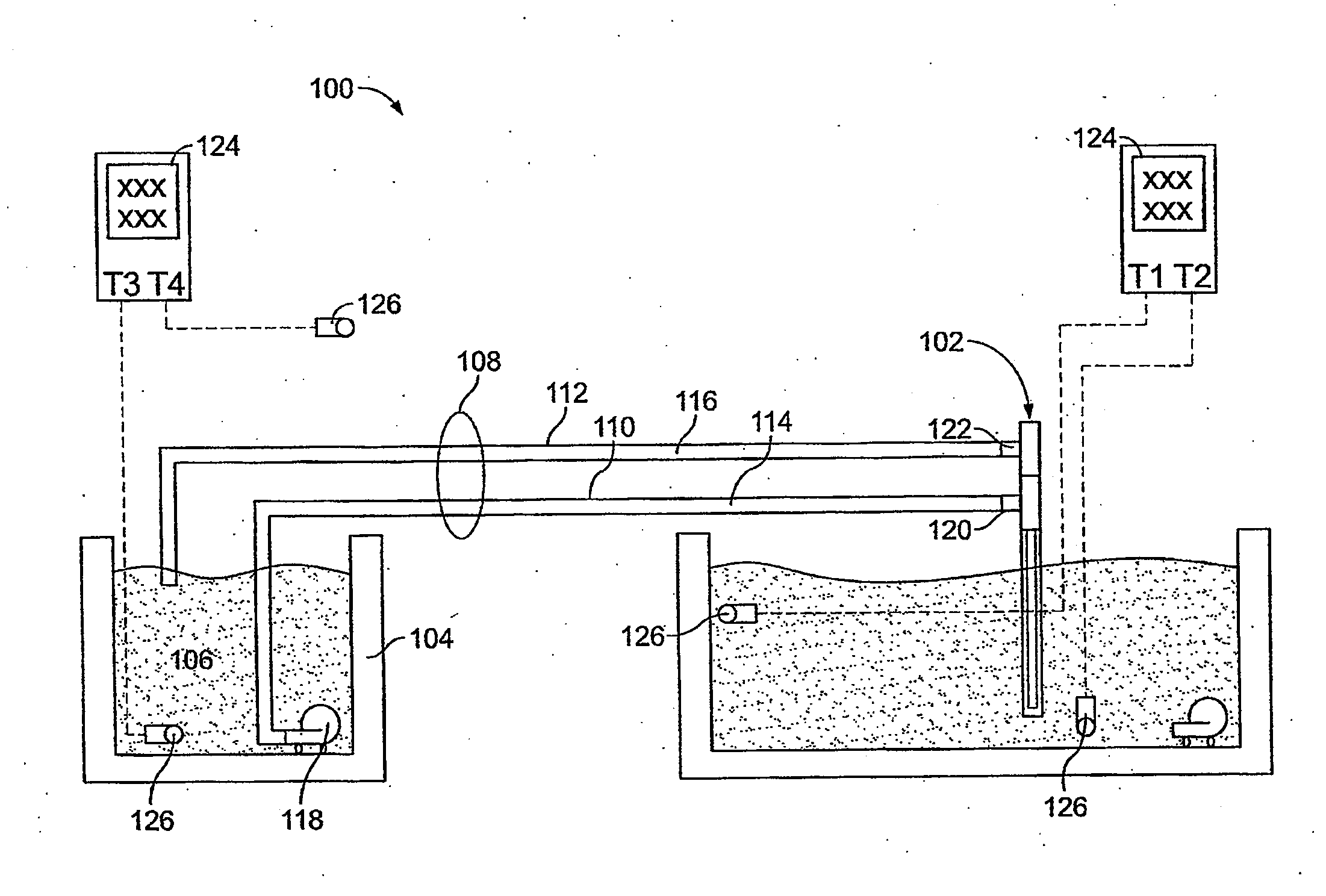Devices and methods for controlling patient temperature
a technology for controlling patient temperature and devices, applied in the field of devices and methods for controlling patient temperature, can solve the problems of reducing the enthusiasm for the use of therapeutic hypothermia, reducing the use of mild therapeutic hypothermia in clinical practice, and reducing the use of mild therapeutic hypothermia. , to achieve the effect of restricting gastric ventilation, reducing the amount of pressure built up, and reducing the amount of pressur
- Summary
- Abstract
- Description
- Claims
- Application Information
AI Technical Summary
Benefits of technology
Problems solved by technology
Method used
Image
Examples
example 1
Cooling of a Model System
[0206]An experiment was conducted to quantify the approximate rate of temperature reduction achievable by use of an exemplary embodiment of the present technology. Target temperature reduction is 4° C. Data were collected and plotted on a common X-Y graph, as shown in FIG. 10.
[0207]The arrangement of equipment for this experiment is shown in FIG. 1. A brief description of each piece of equipment is as follows:[0208]1. The heat transfer device 102 was an exemplary embodiment of a heat transfer device according to the present technology[0209]2. An insulated container, 96 cm (l)×36 cm (w)×36 cm (h), containing 88 kg water at the initial temperature shown in Table 1 represented the mass to be cooled.[0210]3. A 110V electric pump, Little Giant Model PES-70 (4.4 L / min free-flow) was used to circulate hot water within the insulated container (2) to maintain homogeneous temperature of water within this container.[0211]4. The heat exchanger 104 comprised an insulated...
example 2
Operative Temperature Management
[0226]A heat transfer device according to the present technology was utilized in an animal study as described below. The heat transfer region of the heat transfer device was approximately 70 centimeters in length (to accommodate the length of the snout) and had a diameter of about 1.4 centimeters, for a surface area of about 305 cm2.
[0227]A large swine with a mass of 70 kg was chosen to best represent the size and average mass of a human patient. The swine was singly housed in an Association for the Assessment and Accreditation of Laboratory Animal Care, International (AAALAC) accredited facility, with primary enclosures as specified in the USDA Animal Welfare Act (9 CFR Parts 1, 2 and 3) and as described in the Guide for the Care and Use of Laboratory Animals (National Academy Press, Washington D.C., 1996).
[0228]The swine was anesthetized with a pre-anesthetic mix of Telozole / Xylazine, then provided with anesthesia via inhalational route with isoflur...
example 3
[0249]In an experimental model of therapeutic temperature modulation, a heat transfer device according to the present technology was utilized in an animal study as described below.
[0250]Five large swine with masses of between 60 kg and 70 kg were chosen to best represent the size and average mass of a human patient. The study utilized methods consistent with current veterinary and USDA standards, with a state-of-the-art, Association for Assessment and Accreditation of Laboratory Animal Care (AAALAC) International-accredited vivarium. Animal care and handling of was in accord with Office of Laboratory Animal Welfare guidance for humane care and use of animals and with regulations outlined in the USDA Animal Welfare Act (9 CFR Parts 1, 2 and 3) and the conditions specified in the Guide for the Care and Use of Laboratory Animals (National Academy Press, Washington D.C., 1996).
[0251]Swine were anesthetized with a pre-anesthetic dose of ketamine, then provided with ...
PUM
 Login to View More
Login to View More Abstract
Description
Claims
Application Information
 Login to View More
Login to View More - R&D
- Intellectual Property
- Life Sciences
- Materials
- Tech Scout
- Unparalleled Data Quality
- Higher Quality Content
- 60% Fewer Hallucinations
Browse by: Latest US Patents, China's latest patents, Technical Efficacy Thesaurus, Application Domain, Technology Topic, Popular Technical Reports.
© 2025 PatSnap. All rights reserved.Legal|Privacy policy|Modern Slavery Act Transparency Statement|Sitemap|About US| Contact US: help@patsnap.com



